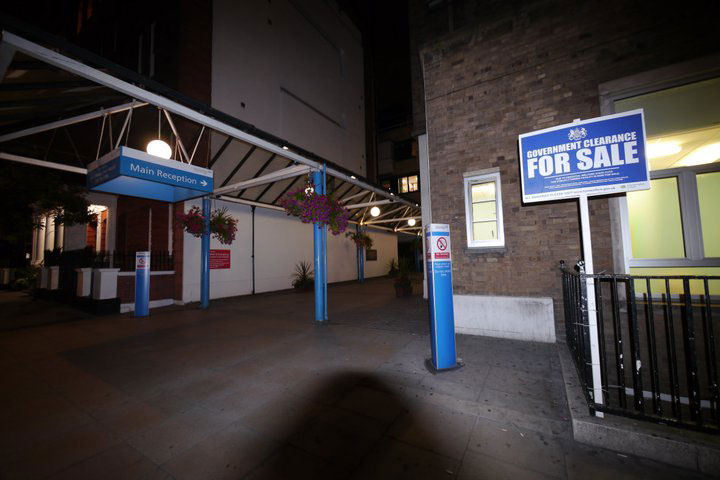Hospital Storm Warning
The financial vulnerability of UK hospitals was highlighted last week, although the cause of their symptoms was apparently up for debate.
Health Secretary Andrew Lansley claimed that 22 NHS trusts were “on the brink of financial collapse” as a result of their PFI debt obligations. But trust managers disputed this, accusing Lansley of trying to steer political heat away from the cuts. “The problems that we face are about having to cut our budgets by 4 per cent every year for the next four years.” one trust executive told the Independent.
So, who is right? Ominously for our hospitals, the answer is both.
Asking the NHS to deliver ‘efficiency savings’ of £15-20 billion by 2013-14 will have obvious and dramatic consequences for the quality of care the NHS can provide.
Meanwhile, PFI has been crippling NHS budgets around the country for years. As Private Eye observed this week: “In 2007… acute hospitals then deemed by the NHS to be so screwed they couldn’t borrow money were four times more likely than others to have large PFI contracts.” The magazine continues: “Then in 2009 when the Audit Commission found that six acute trusts had particularly debilitating deficits, what did we find? Yes, five were lumbered with massive PFI commitments.”
So far, so gloomy, yet the condition may deteriorate because when the forces of the cuts and PFI combine, the challenge for our hospitals grows graver.
A 2011 paper called Private Finance in Austerity addresses two problems of PFI budgets, 1) they are ring-fenced from cuts and 2) they’re indexed to inflation.
Professor of Public Health Allyson Pollock writes: “Although PFI charges preempt between 0.4% and 18.6% of annual hospital trust income, PFI contractors are insulated from efficiency targets.” In other words, PFI debt obligations are immune from cuts. This forces hospitals to make wider and deeper cuts across the rest of their services to continue meeting payments for PFI services.
But PFI contracts are notoriously inefficient and wasteful. For example, maintenance is often handled by off-site contractors who must be brought in to do menial tasks such as changing light-bulbs and moving heavy equipment. This expensive service is fairly unnecessary and the sort of thing a hospital manager would axe to save money. But PFI contracts forbid this. Cuts to other areas, like clinical stuff, hospital beds and drugs budgets must be more brutal to compensate.
This year inflation rates have been at 4%, the highest in nearly two decades. PFI contracts are indexed to inflation, meaning the amount of money owed by hospitals is not fixed but rises with the inflation rate. For instance, if a PFI payment was £100 million last year, it will be £104 million this year. And, if inflation rates continue to rise, £108 million in 2012.
While hospital managers are frantically laying off staff and closing wards to meet ‘efficiency’ targets, PFI contracts are demanding more and more money to provide exactly the same service. This eats even further into frontline service budgets.
So, PFI has our hospitals in a mess but the government does have a trump card, if it wants to play it.
Pollock’s paper notes that some of the biggest PFI project money lenders of the last decade were the bailed out banks RBS, HBOS and Lloyds. Public ownership of these banks provides an ideal opportunity to renegotiate PFI interest rates and pass these savings on to hospitals.
She writes: “The government rescue means that bank ownership and its attendant risks have been transferred, completely or in part, from the private sector back to the public and the taxpayer. However, the case for paying bank lenders and shareholders higher interest rates under PFI rests on the claim that risk has been transferred to them. There can be no case therefore for not reopening these contracts. Management consultants, McKinsey & Company, estimated last year that a reduction of 0.02 to 0.03 percent in interest charges paid to contractors by NHS hospitals could save £200m a year.”
This would, of course, require joined up thinking and an admission that markets do not correct themselves but need regulation and intervention… Don’t hold your breath.









